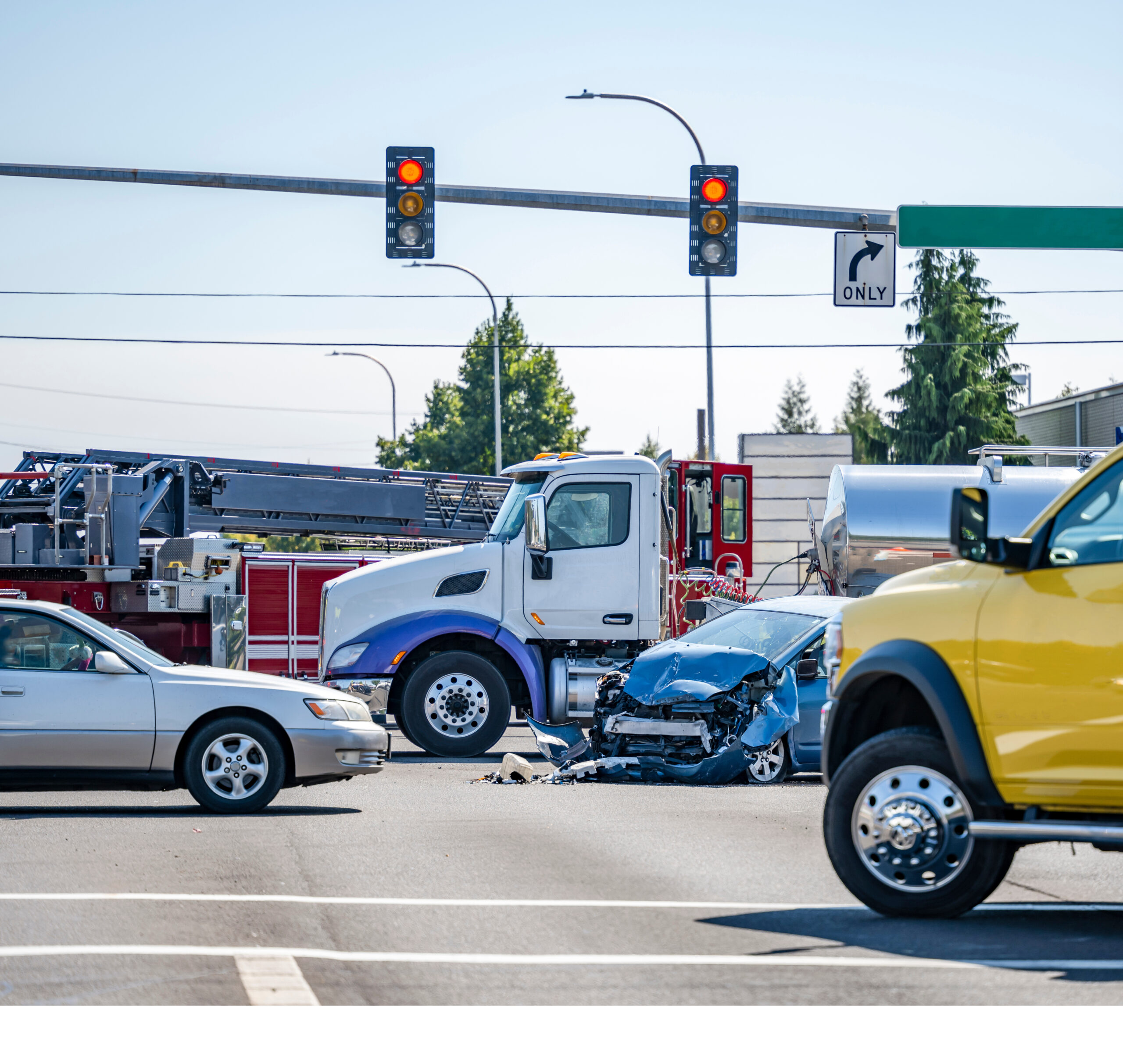RECENT POSTS
Categories
Traffic Light Wrecks: Who is Responsible for Accidents at Intersections?
Accidents at traffic lights are a common and serious type of intersection crash that can leave drivers, passengers, and pedestrians injured. These wrecks are often more complicated than they appear because they typically involve multiple vehicles and conflicting testimony about who had the right of way. If you’ve been involved in a traffic light wreck, it’s important to understand how fault is determined, who may be liable, and how you can protect your rights.
Understanding the Basics of Traffic Light Accidents
A traffic light wreck typically occurs when two or more vehicles collide at an intersection where traffic signals are present. These accidents can involve a variety of situations, from one driver running a red light to both drivers claiming they had a green light. While the cause may seem clear-cut in some cases, there are often nuances that require careful investigation to determine fault. Factors such as traffic signal malfunctions, driver behavior, and witness testimony all play a critical role in assessing liability.

Common Causes of Traffic Light Accidents
Traffic light accidents are often caused by driver error. Some of the most common causes include:
Running a Red Light: One of the most frequent reasons for traffic light accidents is when a driver runs a red light. This can happen when a driver is distracted, speeding, or misjudges the timing of the light.
Failing to Yield: In some cases, drivers may fail to yield to oncoming traffic or pedestrians when making a turn, even though the traffic light is green.
Speeding: Drivers who speed through intersections may not be able to stop in time if the light changes or another vehicle unexpectedly enters the intersection.
Impaired Driving: Drivers under the influence of alcohol or drugs are more likely to ignore traffic signals, significantly increasing the risk of a crash.
Distracted Driving: Texting, talking on the phone, or engaging in other distractions can lead to delayed reactions, causing drivers to miss the light or fail to stop in time.
These causes often lead to serious accidents, and determining fault can be a complicated process that requires careful analysis.
What Happens When Two Drivers Claim to Have Had a Green Light?
One of the most common issues in determining fault for a traffic light wreck is when both drivers claim to have had a green light. In such cases, investigators will examine all available evidence, including traffic camera footage, witness accounts, and physical evidence from the scene of the crash, to clarify who had the right of way.
Driver A Claims They Had the Green Light: If the first driver claims they had a green light, they may argue that the other driver failed to yield or ran a red light.
Driver B Claims They Had the Green Light: If the second driver claims they had a green light, the situation becomes more complex. Additional evidence will be needed to resolve the dispute.
In these cases, the testimony of independent witnesses or any available video footage can help establish the facts and determine who is at fault.
Who is At Fault in a Traffic Light Accident?
Determining who is at fault in a traffic light accident depends on the specific circumstances surrounding the collision. However, there are general guidelines to consider when assessing fault:
Running a Red Light: Drivers who run a red light are typically considered at fault for the accident, as they are violating traffic laws and disregarding the safety of others on the road.
Failure to Yield: Even if you have a green light, you may still be at fault if you fail to yield to another driver or pedestrian who has the right of way.
Yellow Light: If you are at a yellow light when the accident occurs, determining fault depends on whether you were already committed to crossing the intersection when the light changed or whether you could have stopped safely.
What If a Traffic Light Was Malfunctioning or Out of Order?
Sometimes, traffic lights malfunction or are out of order, causing confusion and accidents. In such cases, determining fault becomes more complicated.
Malfunctioning Signals: If the traffic light is not functioning properly, such as being stuck on red or green, this can contribute to an accident. The city or municipality responsible for maintaining the traffic signals could be held liable for failing to ensure that the lights were operating correctly. However, proving negligence often requires substantial evidence, such as prior complaints about the malfunction.
Out of Order Lights: When traffic lights are not working at all, drivers must follow the right-of-way rules at intersections, similar to how they would at a stop sign. If a wreck occurs due to confusion over who should go first, fault may be shared between the drivers involved, depending on their actions and adherence to these rules.
The Impact of Running a Red Light: Legal and Insurance Consequences
Running a red light is a clear violation of traffic laws, and drivers who do so are almost always found to be at fault in the event of an accident. Legally, running a red light can result in fines, points on your license, and increased insurance premiums. Insurance companies may raise the premiums of the driver who ran the red light or, in extreme cases, deny coverage.
Determining Fault When Multiple Parties Are Involved
In some traffic light accidents, multiple vehicles may be involved, which complicates the determination of fault. For example, one driver may cause an initial crash by running a red light, while other drivers may be involved in secondary collisions. In such cases, liability may be divided between multiple parties based on their level of responsibility.
The Importance of Evidence in Proving Fault in Traffic Light Accidents
When multiple parties are involved, evidence becomes essential in determining fault. Police reports, witness statements, traffic camera footage, and vehicle damage can all provide critical insights into how the accident occurred and who was responsible. A thorough investigation can help clarify who was at fault, especially in complex intersection accidents.
Frequently Asked Questions
How a Lawyer Can Help You After a Traffic Light Accident
If you've been involved in a traffic light wreck, working with an experienced attorney is crucial to ensure you receive the compensation you deserve. A lawyer will help gather key evidence, such as police reports, witness statements, and traffic camera footage, to build a strong case. They will review the facts of the accident and help determine who was at fault, including any potential violations of traffic laws. Additionally, an attorney can handle all communications with insurance companies, protecting you from being pressured into accepting a lowball settlement. With their legal knowledge, they will negotiate on your behalf to make sure your medical expenses, property damage, and other losses are fairly compensated.
Wettermark Keith’s experienced team of traffic accident lawyers is committed to fighting for your rights. We will work tirelessly to ensure you’re not taken advantage of by insurance companies and will take your case to court if necessary to secure the compensation you’re entitled to. Whether you're facing mounting medical bills, lost wages, or ongoing pain and suffering, we are here to guide you through the legal process every step of the way.
Ready to work together? Contact us today for a free consultation.
HERE'S WHAT TO DO NEXT
If you or a loved one have been injured and think you might have a case, call us now for a free consultation.


